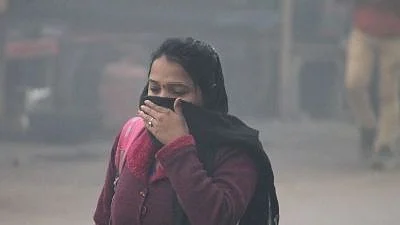The Union government, on Friday, 5 August, told the Parliament that air pollution is primarily an urban phenomenon and the government is focusing on monitoring ambient air quality in the urban areas.
Of the 1,243 air quality monitoring stations covering 465 cities in the country, only 26 have been installed in rural areas – 24 in Punjab and two in Dadra and Nagar Haveli and Daman and Diu on an experimental basis.
"Air pollution is primarily an urban phenomenon. Therefore, the government is focusing on monitoring ambient air quality in urban areas."Union Minister of State for Environment Ashwini Kumar Choubey
"Scientifically, pollution in India, in South Asia, in developing countries is not an urban phenomenon."Prof. Sagnik Dey, Institute Chair Professor at the Centre for Atmospheric Sciences, IIT Delhi.
‘Enough Evidence To Suggest Air Pollution Is Not Just an Urban-Centric Problem'
However, experts say if the government doesn't monitor air pollution in rural areas, "it doesn't mean it doesn't exist" and there is more and enough scientific evidence to suggest otherwise.
"If you go to any rural area in Haryana, it is as polluted as any city – Gurgaon or any other. Source may be different but total pollution level is almost at par. There is hardly any urban to rural gradient. In fact, many times we find at different hours, pollution in the rural areas is higher. Scientifically, there is enough evidence to suggest that air pollution is not just an urban-centric problem."Prof. Sagnik Dey, Institute Chair Professor at the Centre for Atmospheric Sciences, IIT Delhi.
There is a lot of satellite data and studies that show air pollution is as big a problem in rural areas as in the urban, said Chandra Bhushan, CEO of International Forum for Environment, Sustainability & Technology (iForest).
Citing the example of poor air quality in the entire Indo-Gangetic plain, Sunil Dahiya, an analyst at the Centre for Research on Energy and Clean Air, stressed that air pollution "flows like a river" from Punjab to West Bengal, and all areas get affected.
"Air pollution is a regional issue and all areas get affected. Industries, thermal power plants, and brick kilns are set up near rural areas, solid fuel (wood and charcoal) is used in rural households."Vivek Chattopadhyaya, Principal Programme Manager, Clean Air, at the Centre for Science and Environment (CSE).
Air Pollution Management Strategies Need To Move Beyond Cities
Any air quality management plan has to be intersectoral and regional. "In fact, in the Indo-Gangetic plane, particularly, air pollution is equally high in the rural areas," said Sagnik Dey, Institute Chair Professor at the Centre for Atmospheric Sciences, Indian Institute of Technology Delhi.
The government's air pollution management strategy needs to move beyond the city-centric approach and cover all areas. For example, improving air quality in Delhi alone doesn't help if outer areas do not control air pollution properly, explained Chattopadhyaya.
"Delhi’s pollution is going where? Delhi’s pollution is going to Uttar Pradesh, so unless Delhi cleans up, it will not make any major impact in UP," said Dey
(With inputs from PTI.)
(At The Quint, we question everything. Play an active role in shaping our journalism by becoming a member today.)
